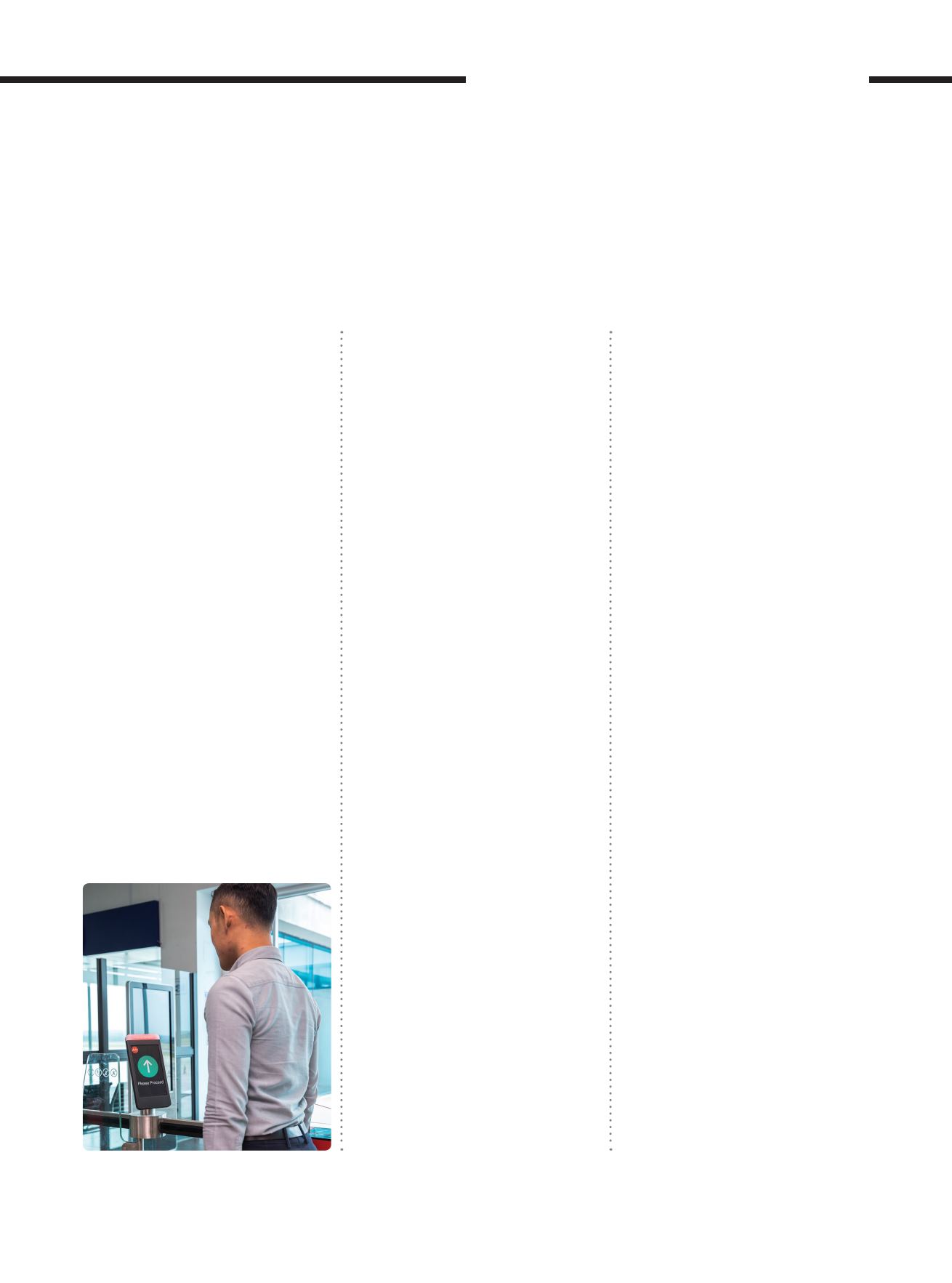

The introduction of Alipay in our mobile
app in February 2017 contributed to a
further increase in usage, with sales in
China growing by a significant 130%.
Value-add features such as ‘Save Card
after Payment’ improved the system’s
user-friendliness. The idea is to introduce
our own version of Alipay in the near
future as we strive to create a cashless
environment on all flights.
With the mobile app, eBoarding Pass and
Alipay, AirAsia’s AppStore rating improved
from 1.2 Stars to 3.8 Stars for Android and
2 Stars to 4.8 Stars for iOS in December
2017.
Facial Recognition at Boarding Gates
In February 2018, we created yet another
guest service milestone by becoming
the first airline in Malaysia to launch
a facial recognition system. Our Fast
Airport Clearance Experience System
(FACES) uses facial recognition to enable
passengers to quickly pass through
security to board their flight. This new
system, approved by the Home Ministry,
National Registration Department,
Immigration Department and CAAM, has
been implemented at two out of four gates
in Senai Airport, Johor Bahru. Moving
forward, we plan to deploy it at all gates
in Senai Airport as well as in all the other
airports we serve within the region.
More wifi Offerings
During the year, we enhanced the range
of services offered under our ROKKI brand
of inflight wifi while reducing data costs
by 77%. New services include inflight
shopping, with the goods purchased
either collected inflight, picked up at the
airport or delivered to the guest’s home.
We also introduced a 50MB internet plan
at RM68, catering primarily to business
users; a news section with feeds from
Aforadio, The Sun and Sinar Harian; and a
Ka-Band system offering data speeds up
to 50Mbps.
Currently available on 42 aircraft
operated by AirAsia Malaysia and 1 AirAsia
Indonesia aircraft, in 2018 the service will
be extended to AirAsia Philippines and
AirAsia India and will be available from
gate-to-gate, enabling uninterrupted use
of inflight wifi throughout the flight.
The NPS Dashboard
During the year, we improved our Guest
Satisfaction Survey by simplifying and
digitalising the process. Emails are sent
out to all guests who make online or web
bookings, within 24 hours of making the
booking and within 48 hours of having
completed their flight. From having 38
questions previously, which would take
20-25 minutes to complete, now there are
only two, which can be answered in 75
seconds. Because it is faster and easier to
complete, fewer guests are dropping out
of the survey leading to a response rate of
about 19% as compared to 4% previously.
The first question in the survey is
standard: “How likely are you to
recommend AirAsia to your family and
friends?” while the second is open-ended,
asking what it was particularly about the
flight that the guest liked or didn’t like.
Through digitalisation, all feedback can
be traced to the specific AOC and flight,
enabling us to analyse and display the
performance of individual departments
across the Group. Departments that
contribute to negative comments are
therefore aware of guests’ sentiments and
can take immediate action. Additionally,
we are also able to get back to our
detractors, either via a call, email or letter,
and try to win them over.
ENERGY CONSUMPTION & FUEL
MANAGEMENT
Fuel comprises one of our largest
operational costs, and the consumption
of fuel by our aircraft is responsible for
most of our carbon emissions, hence fuel
management serves the dual purpose
of maintaining our costs sustainably
low while reducing our carbon footprint.
Various initiatives have been implemented
to manage our fuel consumption. These
are outlined below.
Young, fuel-efficient aircraft
We maintain a relatively young fleet
as younger aircraft tend to be more
fuel efficient. Further enhancing the
fuel efficiency of our fleet, in 2012, we
became the first airline in the world
to take delivery of A320 aircraft fitted
with Sharklet winglets, which reduce
aerodynamics drag allowing us to save
up to 5% of fuel (147 litres) or 464kg of
carbon emissions on every flight. By end
2016, 30% of our aircraft were Sharklet-
equipped. Subsequently, in September
2016, we were the first airline in Asean
to fly the Airbus A320neo aircraft, which
elevates our fuel efficiency by another
16%-20%, saving 666 litres of fuel per
flight. Our aim is for 19% of our fleet to
comprise the neo model by 2020.
[ ]
AirAsia Group Berhad
SUSTAINABILITY
175


















